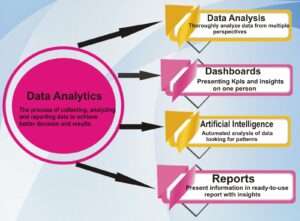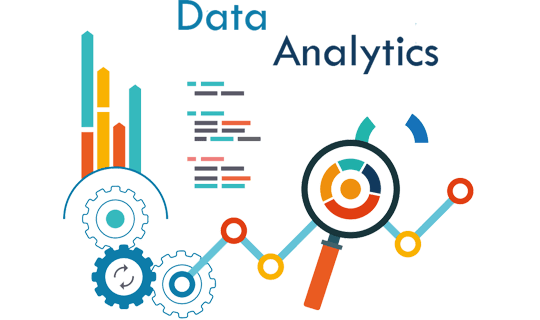What is Data Analytics?
Data analytics: Enables organizations to analyze all their data (real-time, historical, unstructured, structured, and qualitative) to identify patterns and generate insights that inform and, in some cases, automate decisions, actions & connecting intelligence.
Today’s best solutions support the end-to-end analytical process, from accessing, preparing, and analyzing data to operationalizing analytics and monitoring results.
Let’s understand how we can use Data Analytics

- Improved Decision Making:- Data Analytics eliminates guesswork and manual tasks. Be it choosing the right content, planning marketing campaigns, or developing products. Organizations can use the insights they gain from data analytics to make informed decisions. Thus, leading to better outcomes and customer satisfaction.
- Better Customer Service:- Data analytics allows you to tailor customer service according to their needs. It also provides personalization and builds stronger relationships with customers. Analyzed data can reveal information about customers’ interests, concerns, and more. It helps you give better recommendations for products and services.
- Efficient Operations:- With the help of data analytics, you can streamline your processes, save money, and boost production. With an improved understanding of what your audience wants, you spend lesser time creating ads and content that aren’t in line with your audience’s interests.
- Effective Marketing:- Data analytics gives you valuable insights into how your campaigns are performing. This helps in fine-tuning them for optimal outcomes. Additionally, you can also find potential customers who are most likely to interact with a campaign and convert into leads.
Steps involve of Data Analytics in e-commerce business:
- Understand the problem:– Understanding the business problems, defining the organizational goals, and planning a lucrative solution is the first step in the analytics process. E-commerce companies often encounter issues such as predicting the return of items, giving relevant product recommendations, cancellation of orders, identifying frauds, optimizing vehicle routing, e
- Data Collection:- Next, you need to collect transactional business data and customer-related information from the past few years to address the problems your business is facing. The data can have information about the total units that were sold for a product, the sales, and profit that were made, and also when was the order placed.
- Data Cleaning:– Now, all the data you collect will often be disorderly, messy, and contain unwanted missing values. Such data is not suitable or relevant for performing data analysis. Hence, you need to clean the data to remove unwanted, redundant, and missing values to make it ready for analysis.
- Data Exploration and Analysis:- After you gather the right data, the next vital step is to execute You can use data visualization and business intelligence tools, data mining techniques, and predictive modeling to analyze, visualize, and predict future outcomes from this data. Applying these methods can tell you the impact and relationship of a certain feature as compared to other variables.

Conclusion:
Data analytics is the process of exploring and analyzing large datasets to find hidden patterns, unseen trends, discover correlations, and derive valuable insights to make business predictions. It improves the speed and efficiency of your business.








